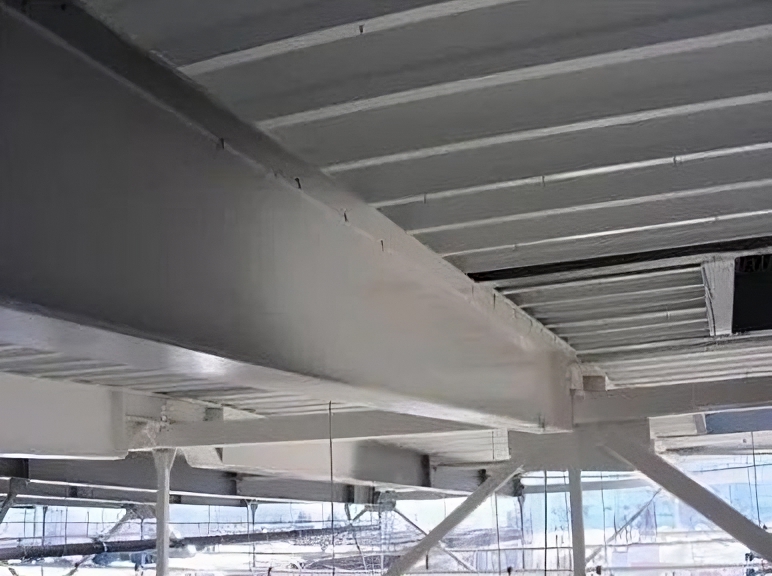Why is intumescent paint required?
Steel won’t combust in the same way as timber will in a typical fire, but all materials become weaker when exposed to heat. Steel is no different, at around 550°C, hot rolled structural steel will lose around 40% of the load capacity it had at 20°C room temperature. It is a commonly held assumption that 550°C was the highest (limiting) temperature that a steel structure could withstand before collapse. Research has shown, however, that the limiting temperature of a structural steel member is not fixed at 550°C but varies according to two factors, the temperature profile and the load. With fires reaching in excess of 1000°C, steelwork needs to be protected to ensure it performs structurally during a fire, preventing catastrophic failure and a building collapse.
What is intumescent paint?
Intumescent paint is a type of fire-resistant coating that swells up when exposed to high temperatures, such as those produced by a fire. It is typically used to protect steel and other structural materials from fire damage, as it can provide up to several hours of fire resistance.
How does it work?
The paint works by forming a thick, foam-like layer that helps to insulate the surface it’s applied to from heat and flames. As the paint heats up, it expands and creates a barrier between the fire and the material it’s protecting, slowing down the spread of flames and buying time for people to evacuate or for firefighters to arrive.

Where is it used?
Intumescent paint is applied to structural steelwork that requires fire protection, this is usually on load bearing elements such as beams, columns, and trusses that support floors or loaded roofs. These can be found in commercial and industrial buildings, as well as in multi occupancy residential developments. It is often applied to structural steel, including, as well as to walls, ceilings, and floors.
What alternatives are there for protecting steelwork from fire?
- Board encasement
- Cementitious coatings
- Fibrous spray-on systems
